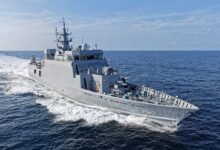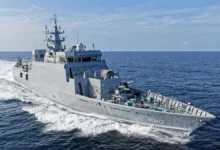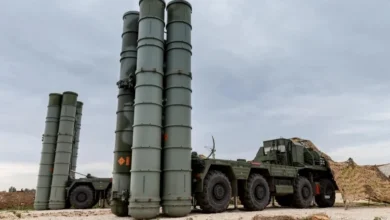In A Couple Months,aircraft Carrier INS Vikramaditya Will Depart After Its Refit

- The Navy plans to employ a catapult assisted take off but arrested recovery (CARTOBAR) to launch aircraft on IAC-II, which will have a displacement of 65,000 crore.
- The committee also noted that an aircraft carrier on each side of the coast is "quintessential" to uphold operational requirements.
The INS Vikramaditya aircraft carrier is receiving its first significant refurbishment since December 2020 and is scheduled to depart in the next months.
A defence insider said, “This is the first significant overhaul of INS Vikramaditya and it should come out in couple of months.” The Navy will have two fully operational carriers for a while once that occurs and with the Indigenous Aircraft Carrier (IAC) Vikrant scheduled to be commissioned this month, the official stated.
A ship or submarine undergoes a refit after two years of service, which is referred to as the aided maintenance phase, the official stated when explaining the maintenance and refit process. Depending on the size of the vessel, the time spans from two weeks to two months.
Then, the official explained, there is the typical refit after six years, which can take anywhere from four months to an entire year.
Another official pointed out that because they are very large and complicated platforms, aircraft carriers must be out of commission for extended periods of time for maintenance and upgrades, adding that this is the reason the Navy has been pushing for a third aircraft carrier.
The Navy plans to employ a catapult assisted take off but arrested recovery (CARTOBAR) to launch aircraft on IAC-II, which will have a displacement of 65,000 crore.
The only carrier now in use is the 44,500-tonne INS Vikramaditya, which was purchased from Russia. Similar to INS Vikramaditya, Vikrant will launch and recover aircraft using a ski-jump and arrestor cables in accordance with the STOBAR (Short Take-Off But Arrested Recovery) technology.
Fire during trials
Due to the recent fire onboard during the trials at sea off Karwar on July 20, the programme was delayed by a few months. There were no reported casualties because the fire was put out by the ship’s crew utilising its onboard firefighting equipment.
China, which already has two carriers—Liaoning and Shandong—launched Fujian, its third and biggest carrier, into the ocean in June.
In its report to the government from last December, the Parliamentary Standing Committee on Defence made the recommendation that the Navy’s combat capabilities would be significantly improved by the addition of three aircraft carriers.
The committee noted that given the lengthy repair times and the hostile environments on both sides of the Indian peninsula, three aircraft carriers are a “unavoidable requirement” to cover all contingencies. The committee also noted that an aircraft carrier on each side of the coast is “quintessential” to uphold operational requirements.
The government had claimed in its response to the committee that “the demand of third aircraft carrier will be worked out on the committed liabilities of the Indian Navy and future procurement projects.”







Facebook Comments